The meal deal: Konstantin Zhukov, Kaye Donachie and Ruby Dickson
6 min read
This week, Plaster staff writer Jacob Wilson went east to see three shows on his lunch break: Konstantin Zhukov at Neven, Kaye Donachie at Maureen Paley and Ruby Dickson at Nicoletti
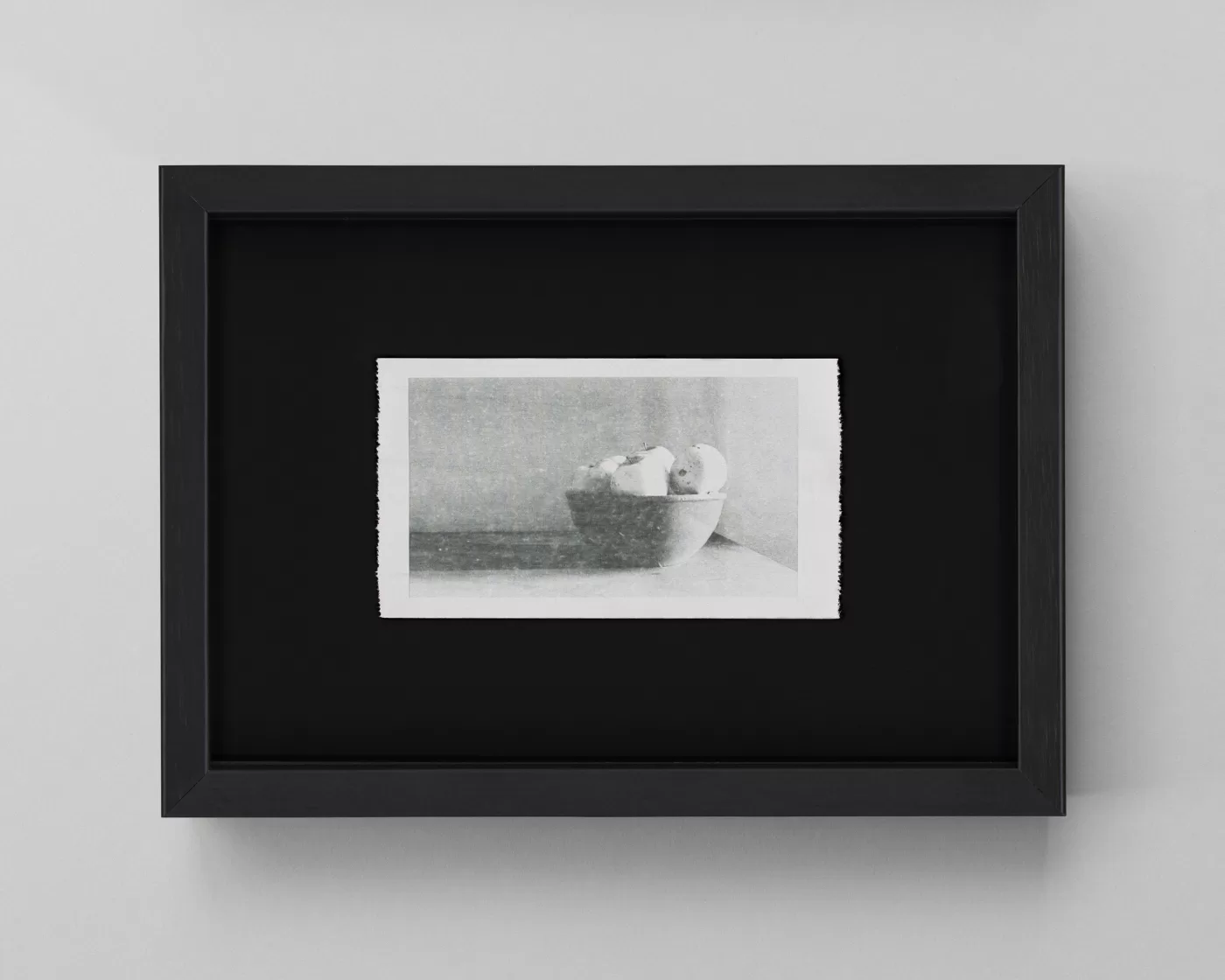
Konstantin Zhukov, Black Carnation Part Three #5, 2024. Courtesy of Neven.
No Meal Deal last week – my apologies. I was stuck in the office and eating al desko while finishing off an investigation into the crisis facing artist studios in London. It was a shame not to be out and about, but it was worth it to talk to artists and studio managers who are facing very serious issues. In short, rising costs and falling numbers of suitable properties mean both artists and studios are being squeezed out of the city. In five to ten years, there might be no studios left. Nobody’s happy, except for property developers. If you have the stomach for reading pieces longer than this, I highly recommend reading it.
This week, I was determined to take a real lunch break. So, I got on a tube and went out east to see what was happening at that end of the city. The stretch of road between Bethnal Green and Cambridge Heath isn’t exactly pretty, but it’s home to a lot of galleries and decent cafés.
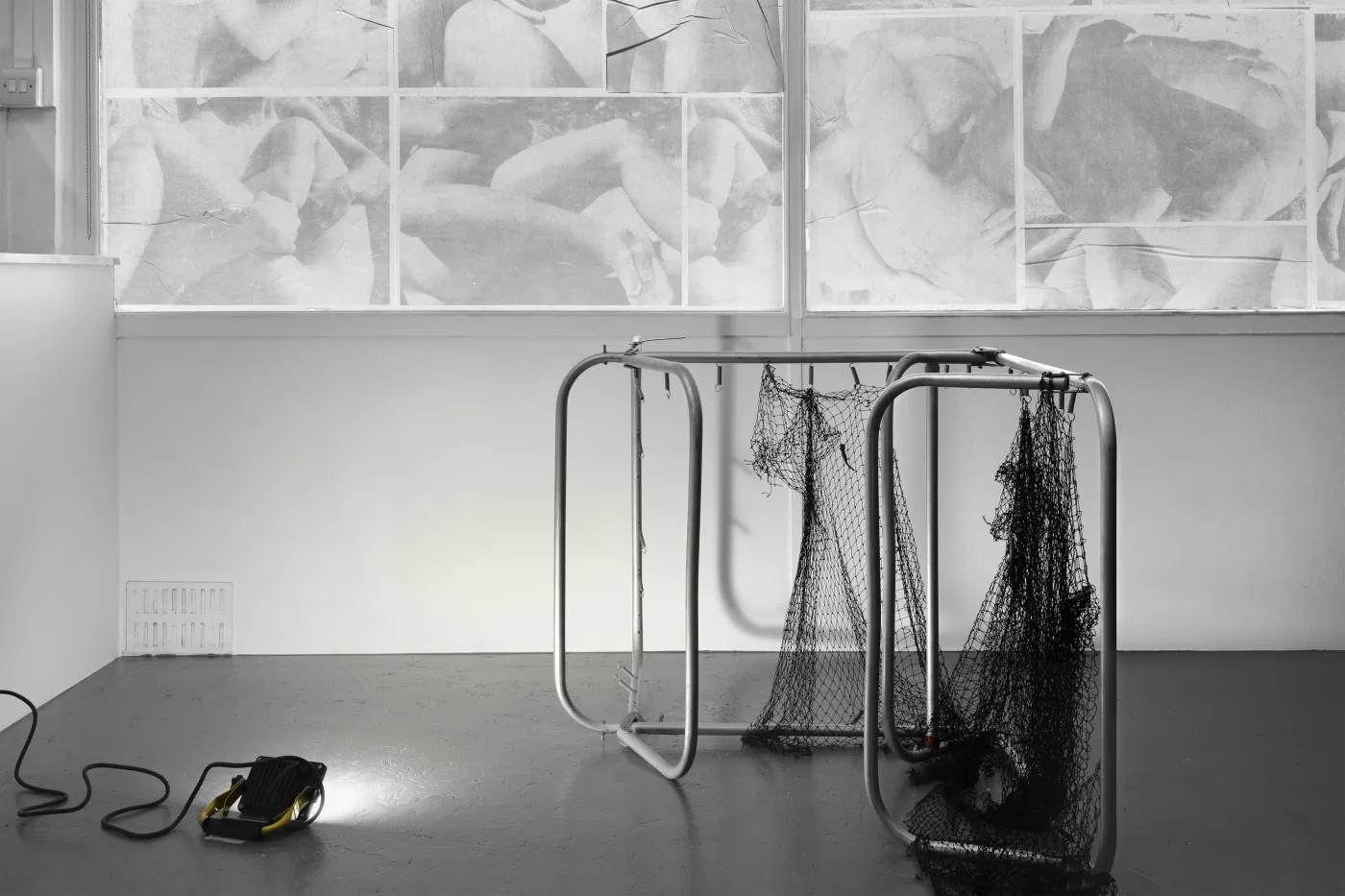
Konstantin Zhukov, ‘Black Carnation Part Three’. Photography by Dominique Cro, courtesy of Neven
Konstantin Zhukov at Neven
In Soviet Latvia, the surveillance in communal living spaces meant it was easier for gay men to enjoy private sex lives in public, away from home. Konstantin Zhukov evokes memories of temporary hospitality, transactional relationships and physical distance in just a few works: photographs printed on thermal paper, the kind used for train tickets in Latvia, and a kind of camp bed called a raskladushka, ubiquitous across Eastern Europe. Yet, for an exhibition on queer history, it’s remarkably aromantic. On the spectrum of love and loss, this show falls at the latter end. A lot of queer artists claim the thrill of anonymity in a conservative society, but Zhukov instead emphasises its crushing dullness.
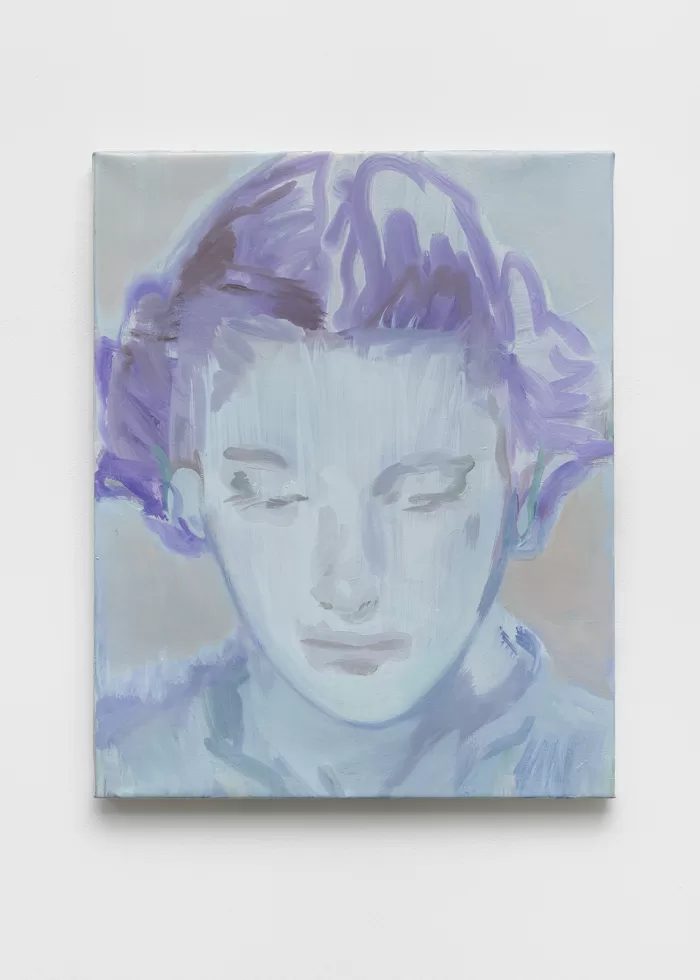
Kaye Donachie, Mirrors face, 2024. © Kaye Donachie, courtesy Maureen Paley, London. Photo: Stephen James.
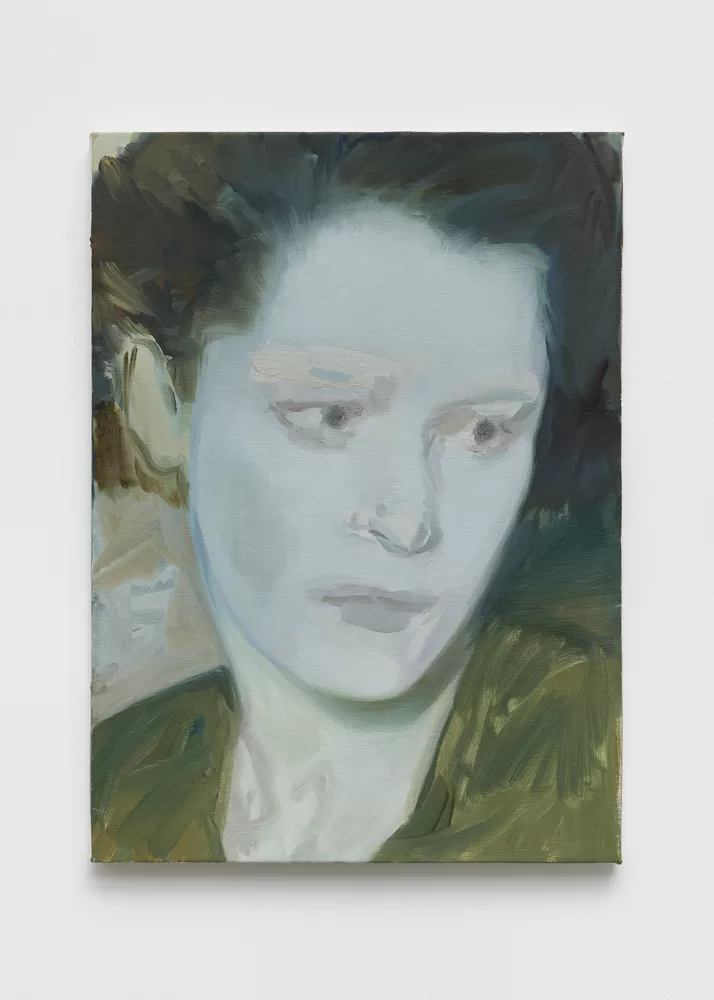
Kaye Donachie, Silence Sings, 2024. © Kaye Donachie, courtesy Maureen Paley, London. Photo: Stephen James.
Kaye Donachie at Maureen Paley
At Maureen Paley, Kaye Donachie is showing portraits inspired by photographs and writings of 20-century female artists (the Bloomsbury group, Claude Cahun, Lee Miller), but which don’t picture anyone in particular. Donachie previously said that faces are simply ‘vehicles for painting’. But why faces? Why do they never face the viewer? And why does Donachie pay so much attention to their eyes and lips? They seem more like vehicles for voyeurism and eroticism. In that sense, they’re kind of like those other famous female faces of the 20th century – Alfred Hitchcock’s leading ladies. Like Hitchcock, Donachie wants to make you look and make you look away. Just remember, if you start to feel guilty for looking, don’t worry, they’re made to be watched.
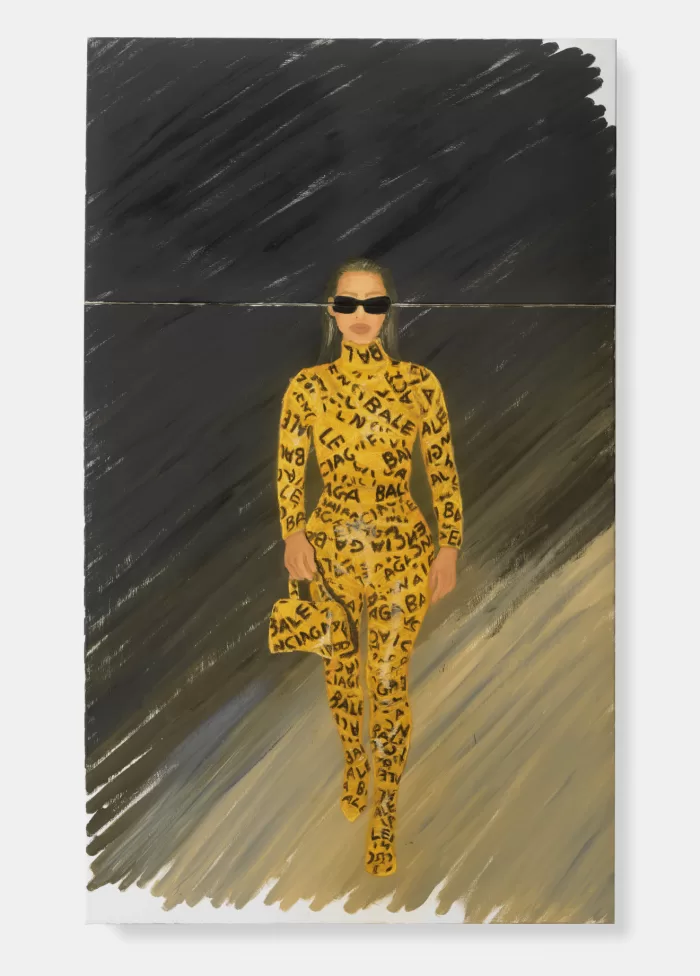
Kim Kardashian unveils BTS of getting wrapped up in shipping tape- see pics, 2024. Courtesy of the artist and NıCOLETTı, London. Photo: Jack Elliot Edwards.
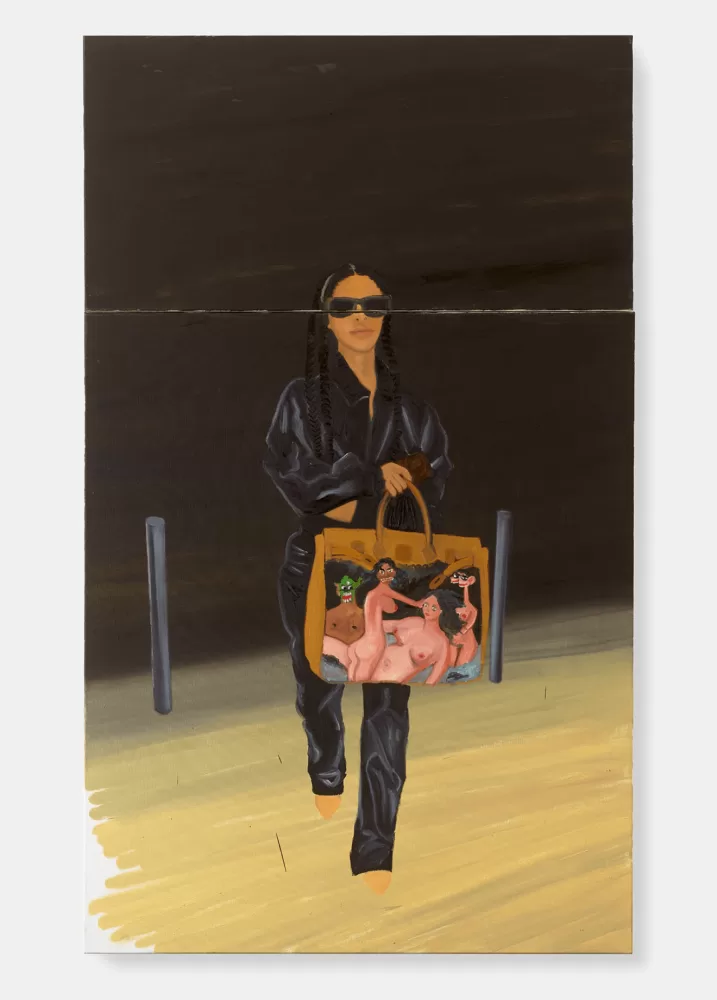
Kim Kardashian Proves That Birkin Bags Are Not Single Use- Vogue, 2023. Courtesy of the artist and NıCOLETTı, London. Photo: Jack Elliot Edwards.
Ruby Dickson at Nicoletti
Ironic detachment in full force at Nicoletti. Andy Warhol knew it was the only way to deal with vapid image-obsessed culture was to embrace it. So does Ruby Dickson, whose paintings of Kim Kardashian are true artworks of our search engine-optimised, lowest-common-denominator age. From subject (world’s most famous celebrity), to source (staged paparazzi shoots), to style (oil paint, realism, life-size canvases) to setting (bare black floors, bare white walls, paintings at eye level) they are designed to be as easy as possible to produce and consume. That said, there are some details designed to trip up viewers: the canvases are unfinished at the corners, and they’re split right across Kim K’s face, and then there’s the choice of subject, she might be famous, but she’s also controversial. Taken together, these paintings make for a much more complex (and pleasant) experience than Keeping up with the Kardashians.
- Konstantin Zhukov, ‘Black Carnation Part Three’, at Neven until 23rd March. www.nevengallery.com
- Kaye Donachie, ‘I kept the memory for myself’, at Maureen Paley until 31st March. www.maureenpaley.com
- Ruby Dickson, ‘Maybe my fairy-tale has a different ending than I dreamed it would. But that’s OK.’, at Nicoletti until 23rd March. nicoletticontemporary.com